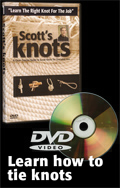The Bosunīs Mate Glossary of Terms
The Bosunīs Mate dictionary of Nautical Terms has been compiled from many sources and is constantly being augmented and revised in our attempt to capture as much of the rich yet complicated (and often conflicting) maritime termonology as possible.
You will find an extensive list of information about all sorts of nautical items from sailorīs knots to the sailors themselves, and from ships to the weather patterns of the seas they ply.
Random terms, by category
|
Abbreviations and Acronyms
(41 terms)
ARTE
A team of members of the Canadian Coast Guard Auxiliary - Pacific that work to help the various units around the coast with their training and also evaluate members at higher levels - to help ensure that everyone is meeting the same standards.
|
The things sailors do
(8 terms)
Avast!
The command to stop, or cease, in any operation.
|
|
Why say back when you can say aft instead!
(20 terms)
Flower of the Winds
A term for the engraving of the wind-rose on early charts and maps, extended after to include the compass-rose on later charts and maps.
|
Common sayings and expressions from maritime lore
(149 terms)
Weigh Anchor
To raise an Anchor off the bottom.
|
|
The foods of the sea
(2 terms)
Sea-pie
A favorite dish for the crew of tall ships. It could consist of almost anything, but the propper dish consisted of layers of meat, vegetables, and fish alternating with crusts of bread and/or broken biscuit - affectionately referred to as a Two or Three decker based on the number of layers.
|
Various knots both functional and ornamental from the nautical to the ornamental and with both historic and present day value.
(12 terms)
|
|
Bits and bobs from life aboard ship
(5 terms)
Q flag
All yellow signal flag meaning "My vessel is healthy and I request free passage.
|
Specific sailing maneuvers
(33 terms)
Harden up
To steer closer to the wind, usually by pulling in on the sheets
|
|
The points of sail and seamanship
(76 terms)
Sternway
1. Movement of a vessel going backwards over the ground.
|
The parts of ships
(131 terms)
|
|
Important people and/or their positions in nautical history
(14 terms)
Landlubber
Stemming from īLand Loverī - this term is used by sailors to describe anyone lacking good seamanship or not sharing their love of the sea.
|
Key locations of the maritime world
(20 terms)
|
|
Rigging components and terms
(104 terms)
|
Sails, their parts and materials
(30 terms)
|
|
Types of vessels and some famous examples
(22 terms)
Catamaran
1. A twin hulled sailing vessel.
2. A raft used as a surf Boat in the East and West Indies consisting of two or more logs lashed togeather, including the much larger rafts made of balsa wood from the western coast of South America. 3. A raft made by lashing two vessels togeather, used on the St. Lawrence River. 4. An invention of the British Navy from the 1804 attack on the French flotilla at Boulogne. A 21ī long 3ī wide flat topped lead lined chest containing About 40 kegs of powder an... |
The various spars used aboard ship
(6 terms)
|
|
The tools of the trade
(27 terms)
Caulking
Material used to seal the seams in a wooden vessel, making it watertight
|
terms awaiting clasification
(36 terms)
none found |
|
Meteorology and its relationship to sailing
(7 terms)
Squall
A sudden violent blast of wind.
|
Total Terms: 539 Total Views: 2153772


